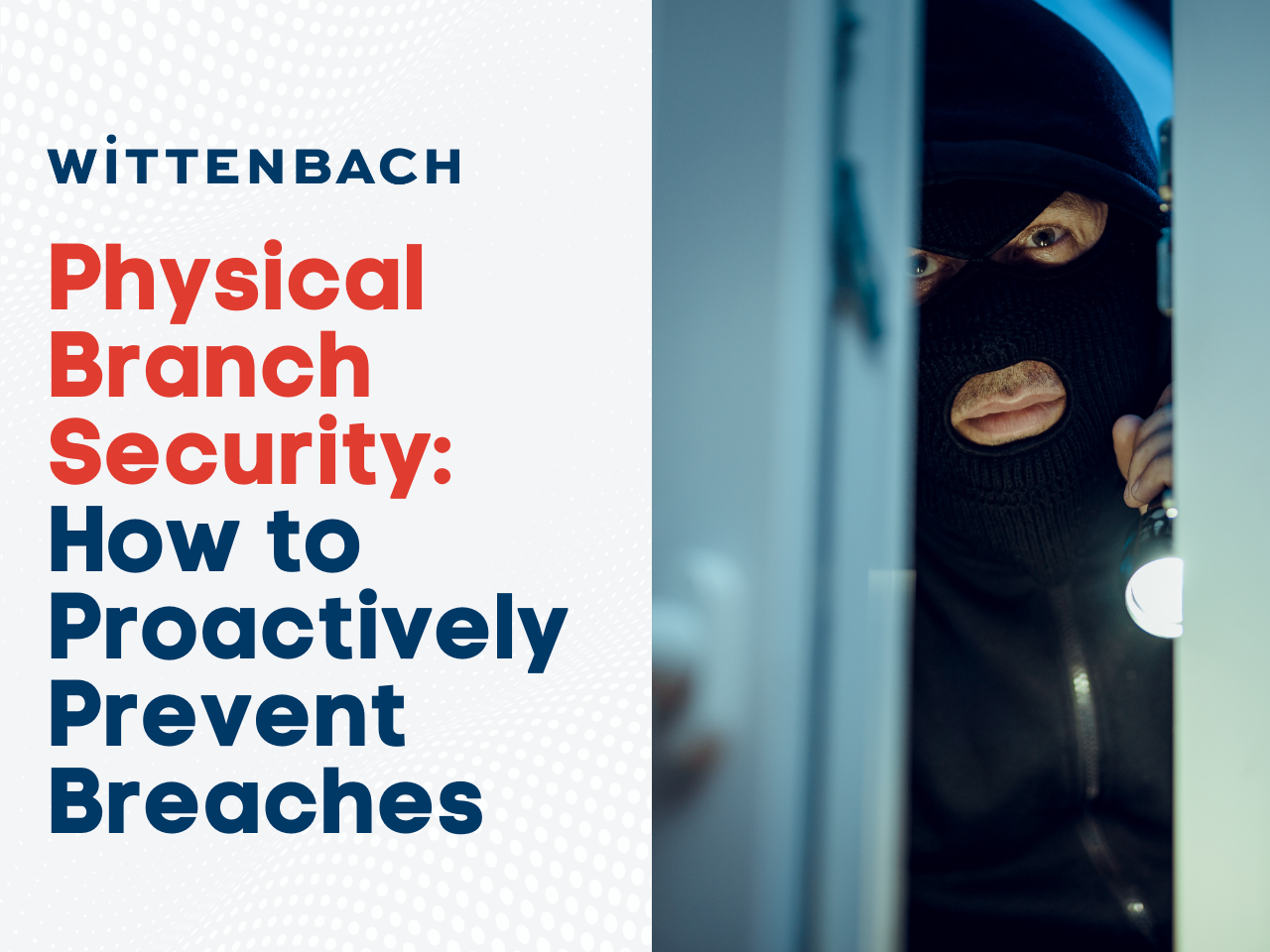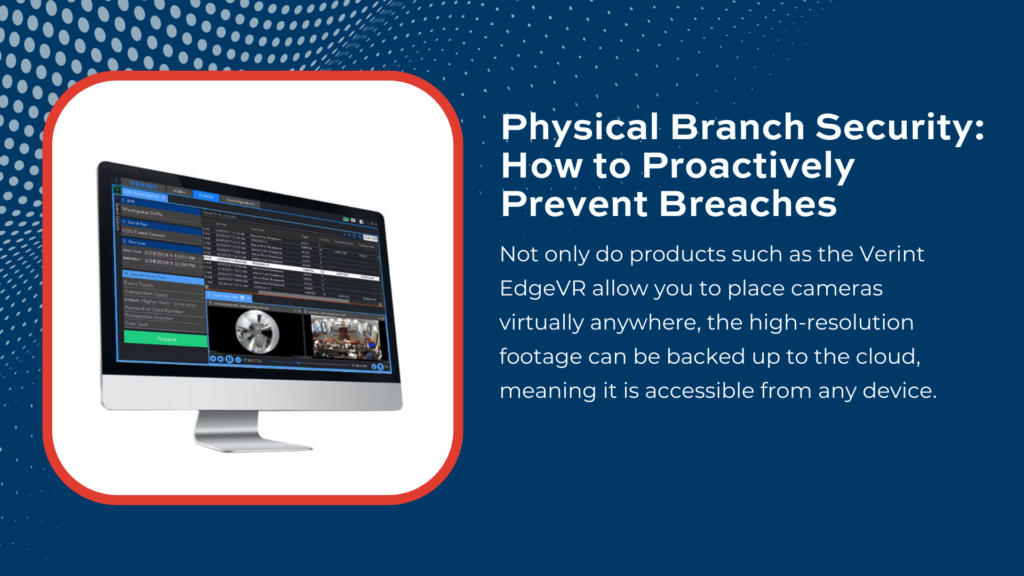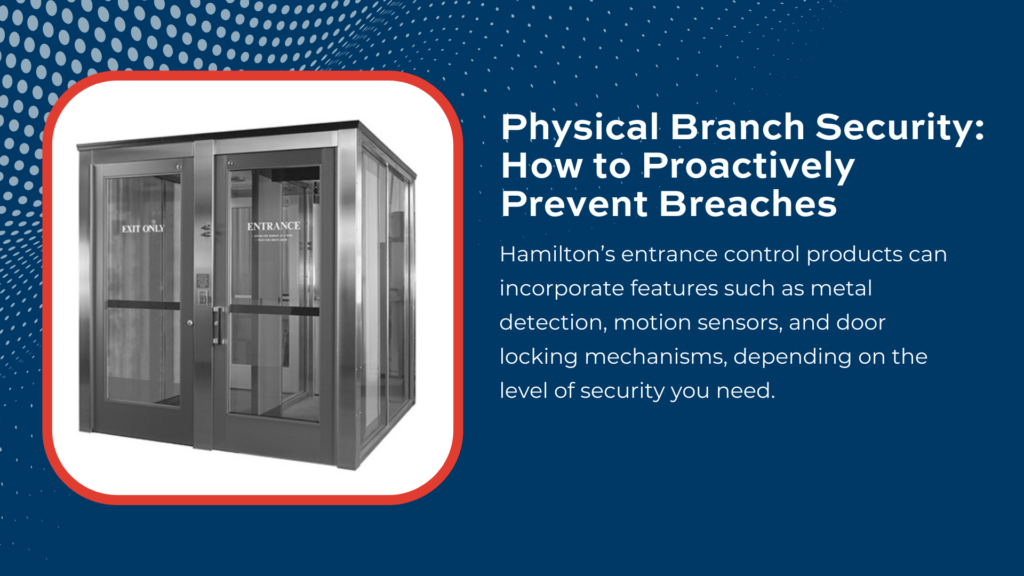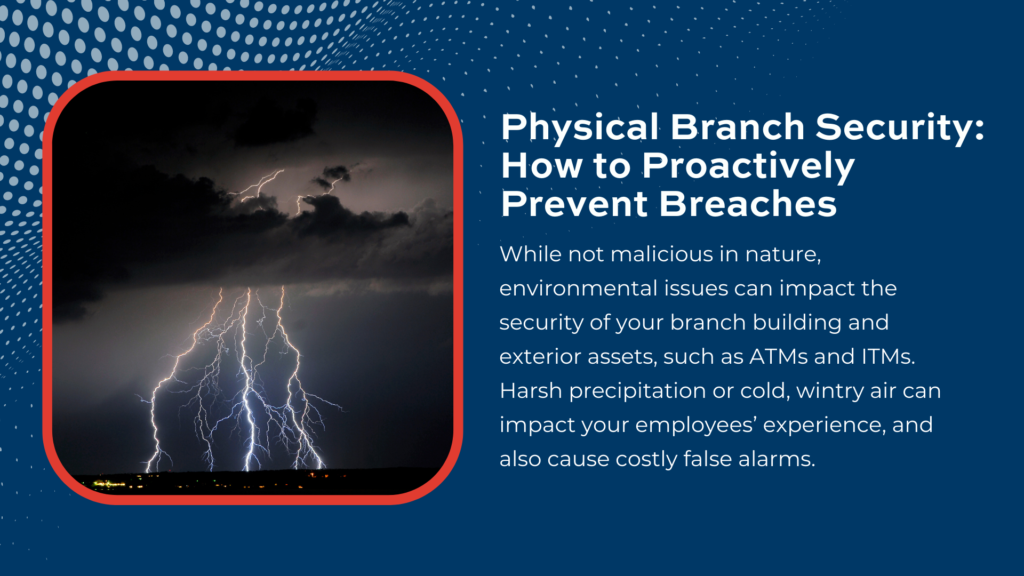There are numerous potential physical branch security threats that institutions can and should mindfully prevent. Whether criminal or environmental, it is important to be aware of possible incidents, as well as the technology capable of deterring, detecting, and/or reporting them. Keeping your employees, clients, building structure, and the assets inside your branch safe are critical to the health and growth of your bank or credit union.
As time-tested experts in branch and commercial security, Wittenbach had these goals—and your financial institution—in mind when we hand-selected our partnerships with manufacturers such as Verint for electronic security, as well as Hamilton and DMP for physical security.
Below, we will discuss several types of physical security threats to bear in mind, as well as some recommendations from Wittenbach’s team of experts as to how to prevent them from coming to pass. As a friendly reminder, this is best-practice advice but does not replace the guidance of lawyers, law enforcement, and most importantly first responders in the event of a true emergency.
- Break-ins: In this case, we are referring to burglaries outside normal business hours. Per Bankrate, “Burglary is a very specific crime that involves a person making an unlawful entry into a structure with the intent to commit a separate felony or theft. The crime is frequently referred to as ‘breaking and entering’, although the entry into a structure does not need to be physically violent. Burglary can occur in connection with any structure, including a business or even an airplane.” Most burglaries are nonviolent, take a startlingly short time (between 90 seconds and 12 minutes!) and there are varying degrees of burglary identified by the law.
How to prevent them: A digital Verint Network Video Recorder, or NVR, system is an effective deterrent to break-ins. Not only do products such as the Verint EdgeVR allow you to place cameras virtually anywhere, the high-resolution footage can be backed up to the cloud, meaning it is accessible from any device. Add a layer of alarm monitoring services, and you can have greater peace of mind knowing that your branch is protected.
- Vandalism is defined by the Merriam-Webster Dictionary as, “willful or malicious destruction or defacement of public or private property.” The scope of vandalism at your branch could vary greatly. On the less impactful end, graffiti could be planted on the side of your building. On the more impactful end, vandals could damage ATM screens, obstruct tube systems, smash windows, and other destructive actions.
How to prevent it: Ohio-based manufacturer Hamilton creates windows in the Hamilton Vision Series. Built with stainless steel, these windows are hurricane-proof and bulletproof, and are approved for second-story installations. They can easily prevent criminals from vandalizing the windows at your branch. Additionally, the Verint NVR system mentioned above, coupled with high-resolution IP cameras, means that if someone does vandalize your building’s exterior, there is a high chance of catching the incident and determining the culprit.
- Robberies are less common than popular culture makes them out to be, but they are not unheard of. Per Arizona State University, “Bank robberies are relatively uncommon: only about 2 of every 100 robberies are of a bank. Although violence is rare, employees and customers are at some risk of injury. If nothing else, being victimized can be terrifying. In addition, bank robberies can invoke fear in the community at large, as most are well-covered by the media.”
How to prevent them: Hamilton’s entrance control products, include a secure entry vestibule or gate systems, offer a stylish way to control the flow of traffic into your branch. They can incorporate features such as metal detection, motion sensors, and door locking mechanisms, depending on the level of security you need.
Thorough employee training is also necessary to ensure that if a robbery occurs, they know exactly how to handle it to minimize risk to themselves, customers, and the assets within your branch. A DMP hold-up button can be instrumental in alerting first responders. Their innovative 1142 Series of hold-up buttons is wireless, with two transmitters that can be mounted under counters, in drawers, or on the wall to ensure swift action is possible in the unlikely event of a robbery.
- Vault breaches: Information Security Buzz says that over time, bank and credit union “strong rooms evolved to incorporate increasing levels of physical security. Safes became vaults, with more steel and concrete being used. Similarly, lock technology increased in sophistication and complexity from simple keys to multiple layers of codes and combinations. When bank heists began to find success via brute force – drilling, explosives and thermic lances will defeat any lock and even reinforced concrete – alarm systems became increasingly valuable.”
How to prevent them: Implementing a strong, secure, modern vault with a Kaba Mas lock is the best way to prevent a breach. Per our recent blog post, the Auditcon 2 lock series is government-rated, has a single and dual combination mode, offers a time delay feature to prevent malicious opening, and also has a Windows 10-compatible audit history that allows you to track entry.
- Environmental issues: While not malicious in nature, environmental issues can impact the security of your branch building and exterior assets, such as ATMs and ITMs. Harsh precipitation or cold, wintry air can impact your employees’ experience, and also cause costly false alarms.
How to prevent them: While we can’t slow down nature, your financial institution can take measures to ensure your branch is prepared for the elements around you. For example, in your drive-thru lane, you can implement a Hamilton transaction drawer, which offers a secure means of transferring cash and documents while sealing your teller in from cold air and precipitation. As mentioned earlier, Hamilton’s Vision Series windows offer hurricane-rated protection from extreme weather, strictly adhering to Florida’s code for window safety.
Conclusion
Realistic awareness of potential physical security threats within your branch will help you to intuitively prevent them, and/or respond in the event of an issue. Now that we have equipped you with knowledge, Wittenbach would be happy to equip you with the products listed above that can help better secure your financial institution or commercial space. Contact us today to learn more!




